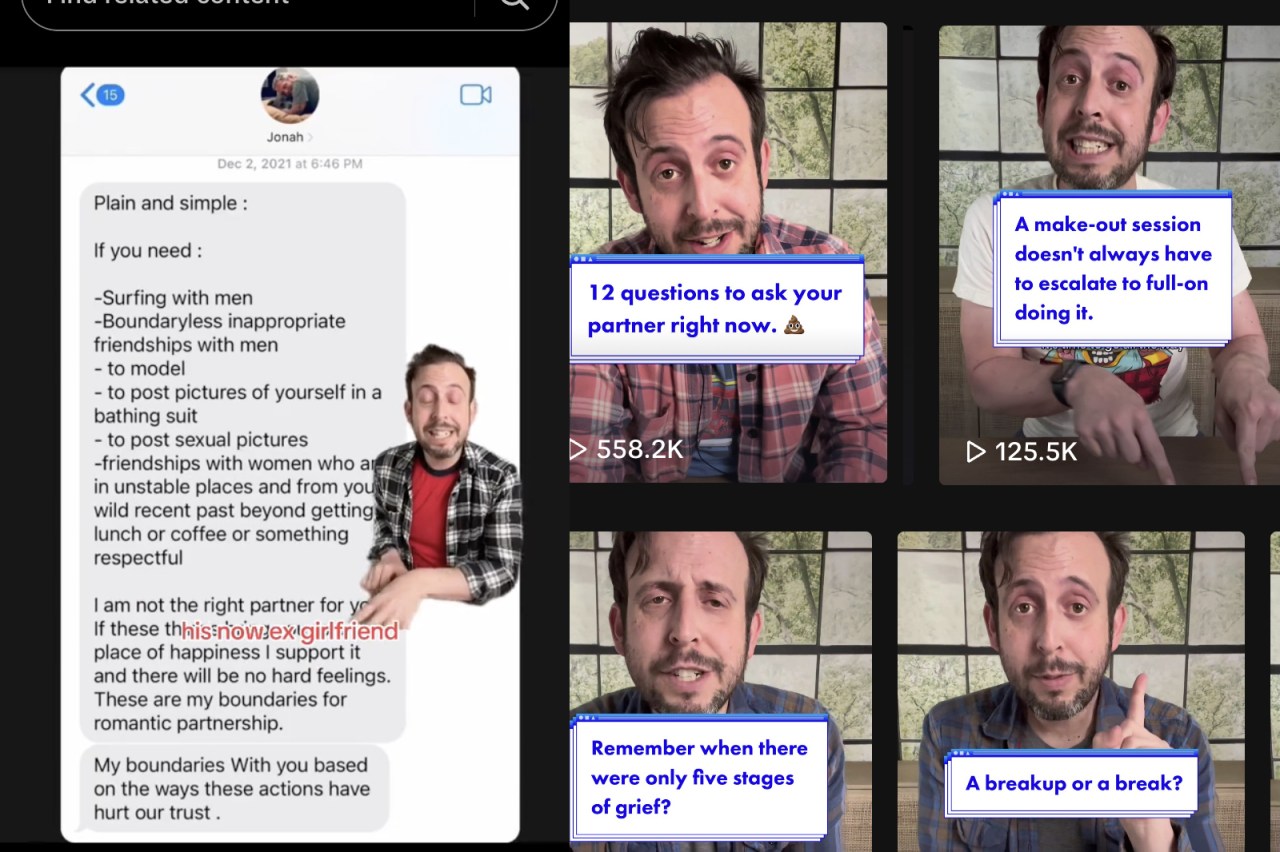
TikTok Helped Bring Rise To The Weaponization Of ‘Therapy Speak’
My TikTok algorithm has accurately assessed that I’m mentally ill. If you were to open up the app on my phone, you’d see that my FYP is cluttered with clips about living with borderline personality disorder, reminders to take my medication, meditation tips, and advice from therapists about how to navigate relationships and feelings more effectively.
To me, it’s been particularly interesting to see the rise of therapists using social media platforms to both promote their own practices as well as the idea of attending therapy in general.
While therapy has a history of being taboo, attitudes seem to be changing. The fact that therapists are finding large and engaged audiences on saturated social media feeds such as TikTok is a reflection of this fact.
The numbers also show this. According to the National Institute Of Mental Health, of the 52.9 million who have a mental illness in the United States, 46.2% received mental health services in 2020. The American Psychological Association (APA) found in a new survey that demand for the treatment of depression and anxiety has increased since the start of the COVID-19 pandemic, reporting that many psychologists have had to increase their workload and have been experiencing longer waitlists as well.
While these things are absolutely promising signs that public perception of mental health treatment and mental illness is becoming less stigmatized, these numbers also show that majority of people who have a reported mental illness are still not getting help for their mental health conditions.
Of course, the reason for this is manifold. For starters, mental health coverage in this country is still, for lack of a better word, abysmal. For example, many mental health providers operate on an out-of-network basis, meaning that care must be paid for out of pocket. This can quickly become costly. In fact, according to an Open Minds Market Intelligence Report, mental health treatment spending hit $225 billion in 2019.
Additionally, accessing care is lacking due to location. There are many Americans who do not live in areas where mental health care providers or facilities exist at all. Because of these barriers, people are turning to the Internet to try and find some semblance of relief, which might be why finding therapists on social media, even if it’s only via quick videos, can be so comforting.
In addition to TikTok, therapists also post wellness-related content on Instagram. In fact, a 2019 New York Times article dubbed therapists as “The new Instagram poets.” Accounts like Millennial Therapist share beautifully-rendered imagery with text that breaks down psychological terminology and concepts in a digestible, easily-consumable way.
While it’s definitely wonderful that the idea of seeing a therapist is becoming more acceptable and that platforms such as TikTok and Instagram are making this even more normalized, there is also, unfortunately, some risk involved because facts without proper context lead to misunderstanding at best and misinformation at worst.
Many of the content shared by therapists include specific psychological terms that require specific situational analysis in order to be used correctly. A therapist’s account on TikTok or Instagram or YouTube is not a substitute for actual therapy. It never will be. Without the guidance of a professional, many of the topics and terms discussed on those cute pastel graphics or quippy 30-second videos can be misused within IRL applications.
Take, for example, the recent rise in interest in narcissism and codependency. Despite the fact that having needs doesn’t make you codependent, nor does someone being unable to meet those needs make them a narcissist, there seems to be a large discrepancy in this understanding among the general population.
There needs to be more discretion about the terms used in a therapist’s office when these are used outside of that setting, especially online. Words are tools and having the right ones help us to communicate our experiences and needs in a more effective manner.
To be clear, I completely understand why people gravitate towards TikTok and Instagram therapists as a substitute for going. Again, mental health care is still not accessible to many people for a number of reasons, be it health insurance, financial limitations, or a schedule that does just not allow time for regular sessions. People are struggling and want help, and the graphics and videos are uplifting and hopeful. They can be helpful in that way.
All I’m saying is that I wish therapists on these platforms would be more explicit in stating that there is a lot of nuance and guidance necessary to fully understand the subjects they’re talking about.
Basic human behavior does not need pathological labeling. In fact, misusing that language is dangerous. It takes away from the behaviors that actually fit that description and water down the severity. We need to be far more careful about throwing around psychological jargon when we don’t actually understand what those words truly mean.

